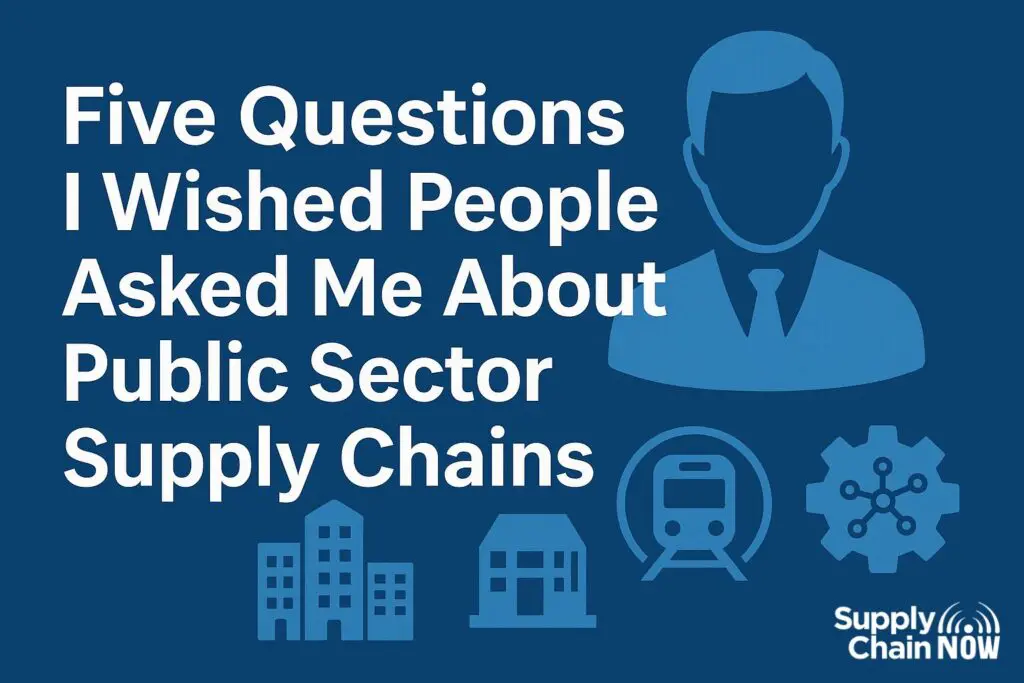
Hire, Onboard, Manage: Treating AI Agents Like New Team Members
Special Guest Blog Post written by Deborah Dull
Imagine it’s launch season in your supply chain, and a team of AI agents is hard at work: coordinating shipments with suppliers, allocating inventory, and handling a missed delivery.
It’s hard to go a day without hearing about the latest AI headlines: new LLMs, new applications, new use cases. These discussions are part of my every day. Business leaders and IT teams are eager to explore – and they have a lot of questions… and apprehension.
In these discussions, we have found one framework that lands consistently: consider AI agents like new hires, not new software.
Step 1: Hire Like You Mean It
Just like hiring humans, this step is about defining what you need. The first decision is the purpose of the role: what problems are you trying to solve? Where are your people overwhelmed? Where is your business growing in coming months?
From here, the next decision is to build the business case just like you would for a new headcount. For example, consider the ROI of having a digital employee who can process supplier performance data 24/7.
Now, decide on the type of agent that will join you team. You might hire an embedded AI from your existing software providers such as ServiceNow or Kinaxis, specialized agents that perform a single task such as from Zip for procurement or Daybreak for forecasting, or full agentic workforces such as from Qurrent or Auxo.
The last decision is to “interview” your candidates and select the one that will be the best fit technically and culturally.
Step 2: Onboard for Success
Just like that nervous new hire walking through your office doors on their first Monday, your AI agent needs to go through an onboarding step. The difference between digital and human workers is that your digital employee learns faster, remembers everything, and never needs coffee breaks.
The first onboarding phase lasts about two weeks. Your AI agent needs system access and basic training. For example, an overview of the process to manage supplier performance. The result feels like an overeager intern, fresh to the workplace and unaware of the way work “really” gets done.
The magic really happens in the next phase. In this phase, your human workers give feedback to your digital workers, just like they would give feedback to a human. “This supplier has struggled with on time performance but has recently committed to improve. Be strict on follow-ups but friendly on tone” has immediate influence on how the agent interacts with that supplier. But unlike humans who might forget the details of a supplier issue from six months ago (or go on vacation!), AI agents remember everything. The overeager intern becomes an expert in just a few weeks.
Step 3: Manage Your Hybrid Workforce
This step is all about performance management activities. The first activity is setting expectations. For example, when a distribution company deployed an AI agent to handle their returns process, they established clear performance standards: process 95% of return requests within four hours, maintain customer satisfaction scores above 4.5, and escalate complex issues to human staff within defined parameters.
The next activity is supervision. Since AI agents work around the clock, their “first line supervisors” do also. This activity is about having agents watching agents, with clear instructions on the type of performance to manage. Humans provide final oversight and handle exceptions.
Another activity is managing human workers. Managing the performance of a hybrid team feels a little different for the human workers. As “run business” and on-the-fly issue resolution moves to AI agents, humans can focus their time on structured problem solving and relationship building. This shifts the performance management time horizon into longer term goals and results. This means a reduction in the daily fire-fighting dopamine hits, replaced by the delayed satisfaction of longer-term wins. For some, this is a welcome break. For others, they’ll need help through the transition.
Ready to Start Hiring?
The stepwise change of Agentic AI in the workplace is happening. Following these steps to lead your supply chain into the new age of hybrid teams.
Ready to dive deeper? “Self-Driving Supply Chain: 5 Steps to Building Your Agentic AI Workforce” is launching later this year and provides the framework for welcoming digital workers into your supply chain
Deborah Dull is Managing Partner of Trillium Digital Services leading Agentic Services. With experience at GE, Microsoft, and Zero100, she specializes in AI-driven supply chain innovation. Her upcoming book “Self-Driving Supply Chain” explores agentic AI workforce implementation in supply chain operations.
More Blogs

Five Questions I Wished People Asked Me About Public Sector Supply Chains

